Key takeaways:
- Player engagement, retention rates, and community involvement are vital success metrics for games.
- Revenue generation requires a nuanced understanding, highlighting the importance of long-term fan loyalty and alternate income sources like merchandise.
- Gathering player feedback through direct engagement fosters investment and collaboration, leading to meaningful improvements in game design.
- Balancing monetization strategies with user experience is crucial to maintaining player enjoyment and loyalty.

Understanding game success metrics
When it comes to measuring a game’s success, I’ve often found that player engagement is one of the most telling metrics. Take, for instance, the moment I realized a game I worked on had an astonishing retention rate—players kept returning long after the initial launch. It’s exhilarating to see community engagement thrive; it feels like you’ve created something that resonates deeply with players.
Another crucial metric is revenue generation, but it’s more nuanced than just looking at the numbers. I recall a game that initially seemed underwhelming in financial returns, yet its dedicated fan base led to a surprising surge in merchandise sales a few months later. This experience taught me that understanding the financial health of a game often requires patience and a broader perspective on what defines success.
Lastly, player feedback is an invaluable component of assessing success. I remember reading through player reviews and forums after a launch and realizing that players genuinely loved certain features while expressing frustration over others. It made me wonder: how often do we overlook the emotional connection players build with our games? Listening to that feedback can illuminate the path forward, offering insights that raw metrics alone might miss.
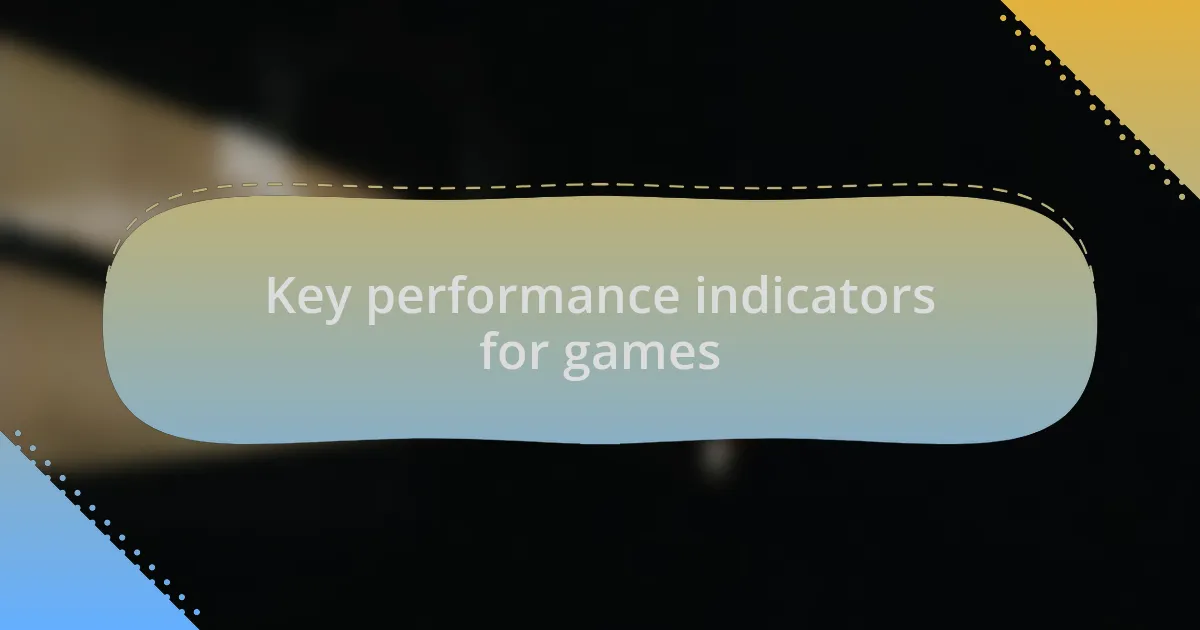
Key performance indicators for games
Key performance indicators (KPIs) in gaming extend beyond simple numbers; they’re the lifeblood of understanding player behavior. I clearly remember analyzing a game’s session length data—my heart raced when I saw players spending an average of over an hour in the game. It sparked a question in my mind: what keeps them coming back? That’s when I realized that meaningful content and an engaging environment were key drivers for that success.
Another vital KPI I’ve come to value is the cost per acquisition (CPA). I still reflect on a particular marketing campaign where we thought our advertising spend was justified, only to find out that our CPA was much higher than anticipated. This revelation was both a jolt and a lesson—it’s critical to ensure that our marketing efforts align with potential player value. Are we investing wisely, or are we chasing after a mirage?
Finally, the game’s virality metric can be a game-changer. I remember when a title I developed sparked social media conversations like wildfire, with players eagerly sharing gameplay clips. It dawned on me that a game’s ability to generate organic buzz ties directly to how well it resonates with its audience. How often do we consider that our game’s success might hinge on its capacity to inspire players to share their experiences with others? That sort of word-of-mouth connection can be a powerful indicator of a game’s long-term viability.

Analyzing player engagement statistics
When diving into player engagement statistics, I often turn to metrics like daily active users (DAU) and monthly active users (MAU). It amazes me how these numbers can reveal trends and shifts in player interest. I once launched a game that initially attracted a large audience, only to see DAU drop sharply after a month. That situation pushed me to investigate what was causing disengagement—was it the gameplay balance, the lack of fresh content, or something else entirely?
Time spent in-game is a telling statistic, too. I vividly recall validating my hunch about one game when I noticed players averaging over two hours in a single session. I started pondering: what elements were keeping them glued to the screen? That’s when I discovered that intricate storytelling and immersive graphics significantly contributed to their experience. It’s fascinating how engagement can stem from a player’s connection to the game world, isn’t it?
Interestingly, social interactions within games also amplify player engagement. I remember working on a multiplayer title where team dynamics and communication seemed to create an addictive loop. Players frequently formed lasting friendships, turning gaming sessions into social gatherings. This insight led me to realize that when players feel they’re part of a community, their commitment to the game grows exponentially. Have you ever thought about how camaraderie impacts your gaming experience? It’s a powerful force that shouldn’t be underestimated.
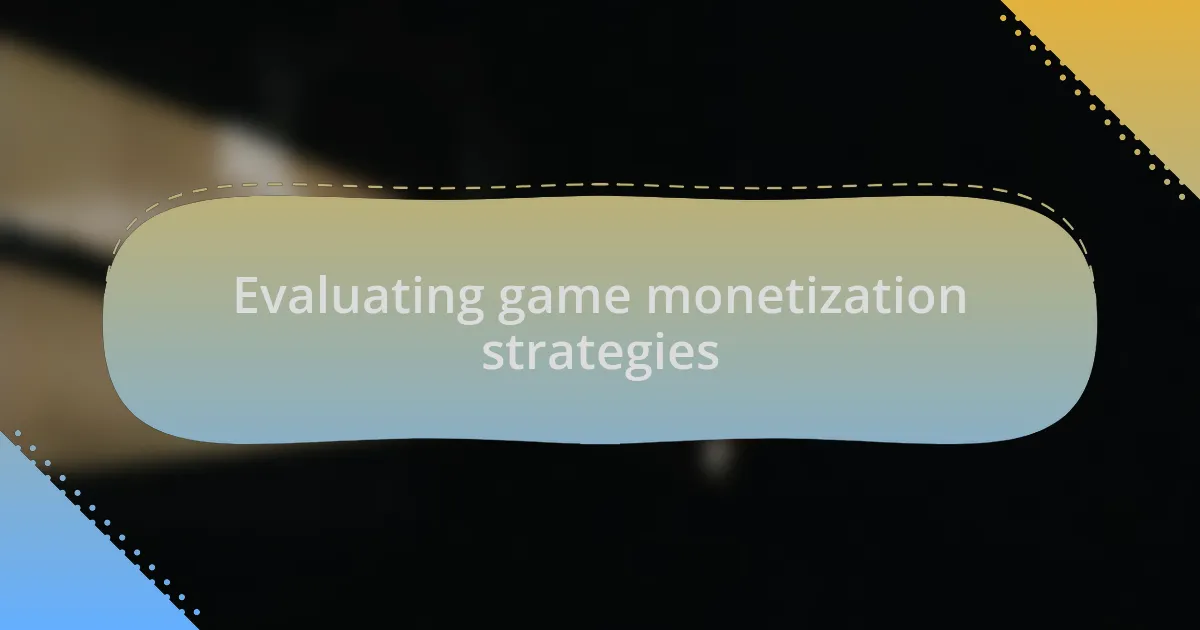
Evaluating game monetization strategies
When I evaluate game monetization strategies, I often look at the balance between user experience and profit. For instance, I once launched a free-to-play game that relied on ads for revenue. Initially, it seemed effective, but I noticed players dropping off because the ads interrupted their immersion. It made me realize that monetization shouldn’t come at the cost of player enjoyment—finding that sweet spot is crucial.
I’ve experimented with various monetization models, including in-app purchases. A memorable experience was when I introduced cosmetic items for sale. This strategy not only increased revenue but also empowered players to express their individuality. It got me thinking: when players feel a sense of ownership over their in-game presence, does it enhance their overall loyalty to the game? My answer is a resounding yes; it fosters a deeper connection.
Another insightful strategy I’ve observed is subscription-based models. I remember a project where players could subscribe for exclusive content and features. The outcome was intriguing—while revenue grew steadily, the community felt more invested. It led me to ponder: does exclusive access create a sense of belonging among players? Absolutely! When players feel they’re in an elite group, it amplifies their attachment to the game and the community.
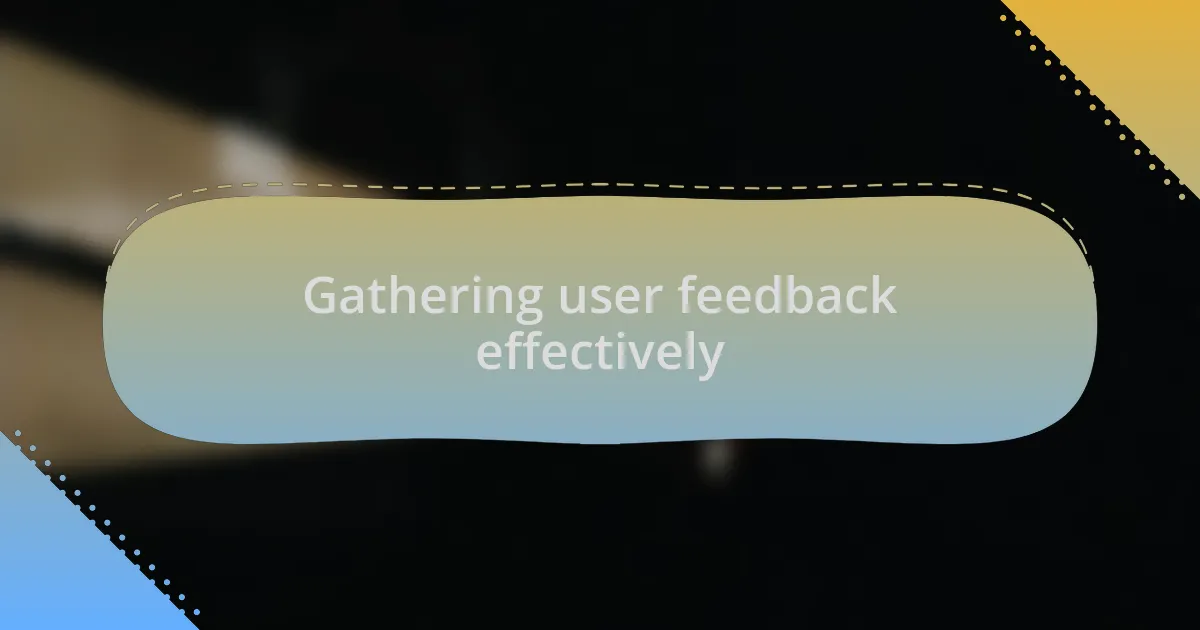
Gathering user feedback effectively
When I think about gathering user feedback effectively, I always emphasize the importance of creating a welcoming environment for players to share their thoughts. I once implemented a simple feedback form right in the game, and the volume and quality of responses surprised me. Have you ever noticed how players appreciate when their opinions are valued? It’s like opening a dialogue that strengthens the bond between them and the game.
I also found that engaging with players on social media platforms has been a game-changer for gathering insights. A memorable experience was when I posted a question about potential game features and received a flood of suggestions. The enthusiasm was palpable. It made me wonder: does the act of open discussion make players feel more invested in the game’s development? Without a doubt, it cultivates a community spirit that fuels excitement.
Another strategy that I swear by is hosting regular playtesting sessions where players can provide real-time feedback. In one instance, during a testing phase, a player pointed out a frustrating level design that I hadn’t considered. I realized that these sessions not only allow players to voice their concerns but also foster collaboration. Their involvement transforms feedback from mere suggestions into a shared journey, doesn’t it? This collaborative approach can lead to actionable changes that resonate deeply with the gaming community.
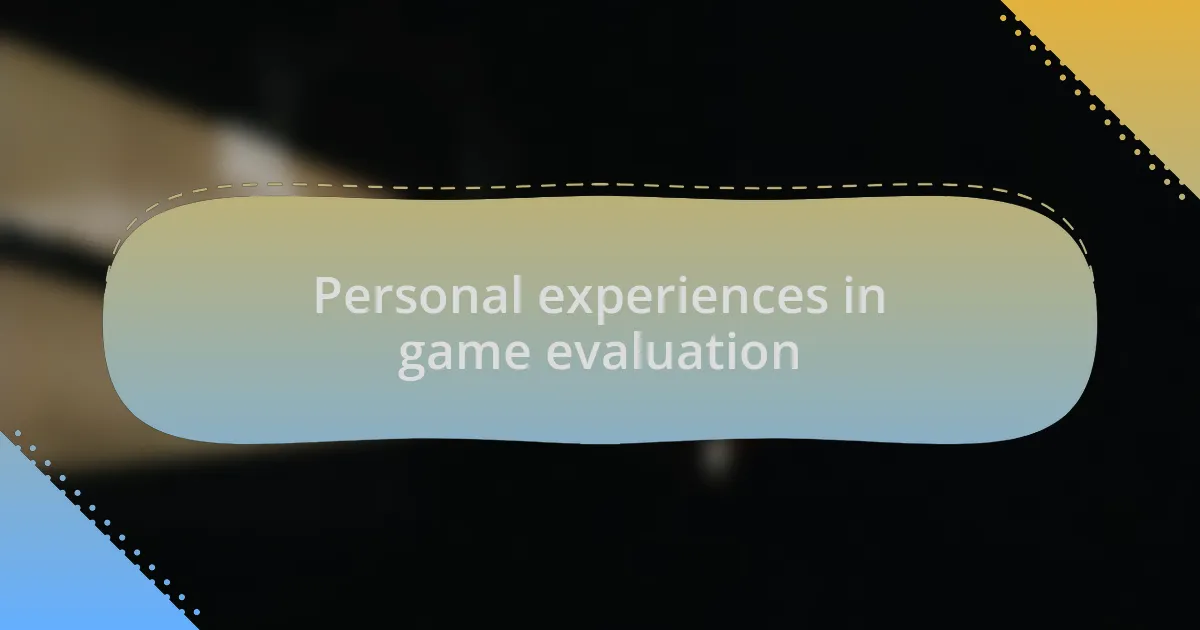
Personal experiences in game evaluation
When evaluating a game’s success, I always reflect on my own playing experiences. One particular game caught my attention because it made me feel truly invested in its story and characters. Have you ever played a game that left you thinking about it long after you turned off your console? I felt a strong emotional connection to the characters, which made me realize the importance of narrative in engaging players.
During my journey in game evaluation, I’ve often turned to metrics to track elements like player retention and in-game interactions. I remember one project where we saw a significant drop in player engagement after the first few levels. Analyzing the data revealed that the onboarding experience was lacking. It was a wake-up call for me; I learned that understanding both qualitative and quantitative feedback is vital for crafting an experience that keeps players hooked.
Feedback sessions have taught me that every player’s voice matters. I recall a lively discussion with a group of players who passionately debated the balance of game mechanics. Their diverse perspectives opened my eyes to aspects I had overlooked. It’s fascinating how player insights can highlight strengths and weaknesses that might not be evident from behind the development desk. How often do we underestimate the power of collaboration? Those conversations have immensely shaped my approach to game design.
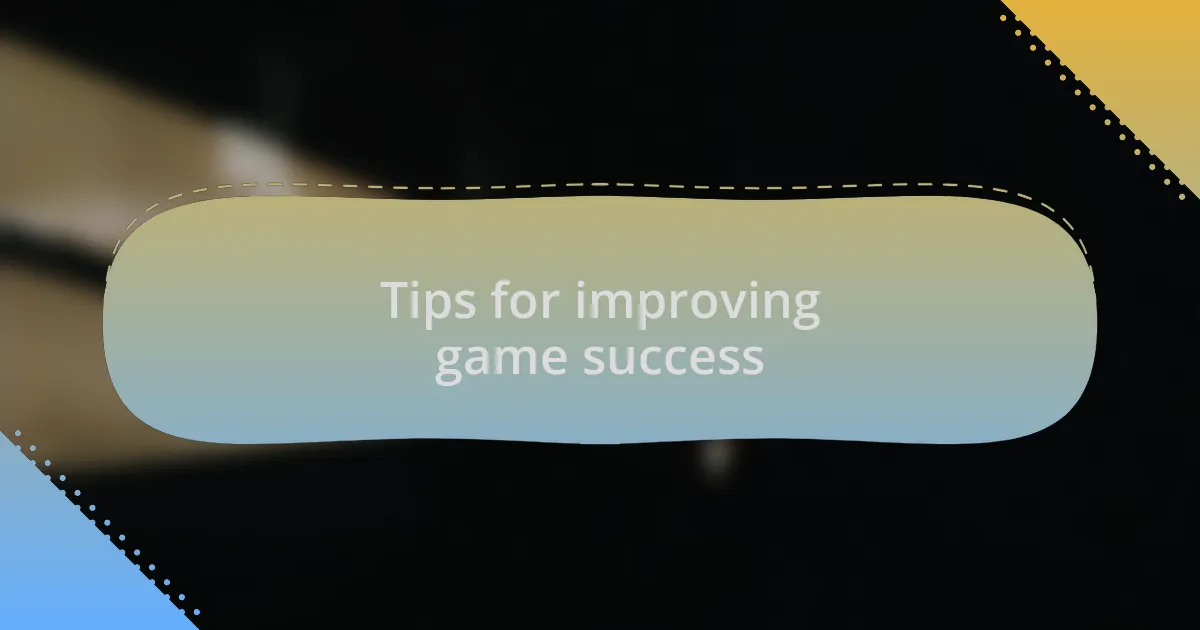
Tips for improving game success
To enhance a game’s success, I recommend focusing on community engagement. I once participated in an indie game’s beta test where the developers actively solicited player feedback through forums and social media. This interaction not only made me feel valued but also resulted in meaningful updates that truly reflected the players’ desires. Have you ever felt more invested in a game simply because you had a say in its development?
Another critical aspect is to prioritize a seamless user experience. In my experience working on a mobile game, we spent countless hours refining the controls and interface. One minor adjustment led to a 20% increase in user retention! Just think about how frustrating it can be when a game is difficult to navigate. A fluid interface allows players to immerse themselves without unnecessary distractions, ultimately improving their enjoyment and commitment to the game.
Finally, don’t overlook the power of storytelling. I vividly remember becoming hooked on a game because of its compelling narrative and character development. It’s astonishing how a well-crafted story can transform a simple gameplay experience into an emotional journey. Have you ever completed a game and felt a profound sense of loss after leaving its world? This deep connection keeps players coming back, and it’s something that every game designer should strive to achieve.